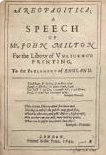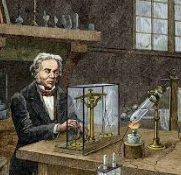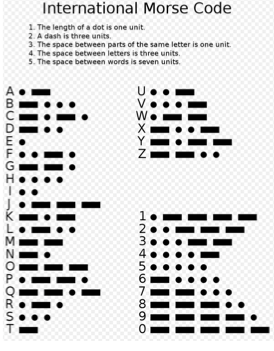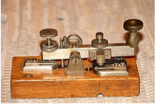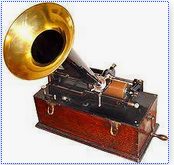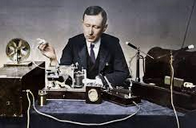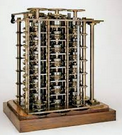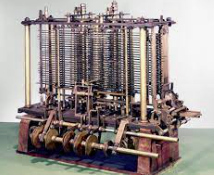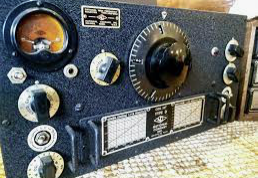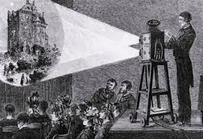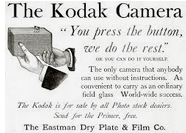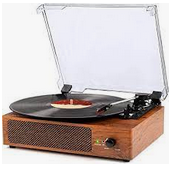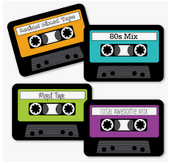Abbreviations ![]() Acronyms
Acronyms![]() Animals
Animals![]() Antonymns
Antonymns![]() Big Words for Small Words
Big Words for Small Words![]() Characteristics
Characteristics![]() Church
Church![]() Countries Cities
Countries Cities
About Computers![]() Communication
Communication![]() Death
Death ![]() Diminutives
Diminutives![]() Famous
Famous![]() Figurative Expressions
Figurative Expressions![]() Gender
Gender![]() Geographical
Geographical![]() Gods and Goddesses
Gods and Goddesses![]() Government
Government
Grammar and Syntax![]() Human Relationships
Human Relationships![]() Inventions
Inventions![]() Kings and Queens
Kings and Queens![]() Literary Sentences
Literary Sentences![]() Marriage
Marriage ![]() Medical
Medical![]() Metaphors
Metaphors![]() Miscellaneous
Miscellaneous![]() NounsNamesNature
NounsNamesNature![]() Negatives
Negatives![]() Numbers
Numbers![]() Opposites
Opposites![]() Patron Saints
Patron Saints![]() Places
Places![]() Possessive Case
Possessive Case![]() Phobias
Phobias![]() Professions
Professions![]() Proverbs
Proverbs![]() Prefixes
Prefixes
Science & Arts![]() Scientific Terms
Scientific Terms![]() Seven Wonders
Seven Wonders![]() Similies
Similies![]() Synonyms
Synonyms![]() War Words
War Words![]() Wedding
Wedding![]() Words to Verbs
Words to Verbs![]() Other
Other![]() Home
Home

Communication a short fictionalized story
By Peter J Faulks
Looking at how people communicated and how this developed into digital technology, going back in time, early humans who needed to communicate when hunting used hand signals, this was fine if they could see each other so eventually they developed smoke signals and all sorts of forms of communicating, leading to flags, mirrors and any way that they could get in touch with each other, this usually occurred using relays of signals from village to village or runners or horses and even pigeons! so there was always a constant effort being made to communicate. We even tried smoke signals. As civilization evolved from nomadic hunters into a more agricultural society and began trading goods, it was necessary to find a way to record transactions. Small portable clay tokens were fashioned into specific shapes to represent objects in approximately sixteen economic categories—sheep, grain, oil etc.
http://www.designhistory.org/Handwriting_pages/EarlyWriting.html
We learnt to write and read so we could send written dispatches. Sometimes the messages got mis-translated and we see armies going the wrong way or like the Charge of the Light Brigade charging up the wrong valley. So we only had written communication for many centuries until the mid 18th Century, A quill is a writing tool made from a moulted flight feather (preferably a primary wing-feather) of a large bird. Quills were used for writing with ink before the invention of the dip pen, the metal-nibbed pen, the fountain pen, and, eventually, the ballpoint pen. 
Wall paintings Ancient Egyptian wall paintings provide a fascinating glimpse into the past. In tombs it was the painter's task to preserve the dead individual's spirit. Most tomb art generally followed consistent rules and held special meaning to the ancient Egyptians. A scribe wrote the text for a book, and an artist, called an illuminator, painted the pictures and decoration. Scribes and illuminators made each book by hand. Manuscripts (handmade books) were often written and illuminated by monks in monasteries.
Revolutionary printing technology began in east Asia, with work done by Chinese nobles, Korean Buddhists, and the descendants of Genghis Khan—and, in a truth Davis acknowledges briefly, their work began several centuries before , however scholars commonly credit the ancient Romans with publishing the first newspaper, Acta Diurna, or daily doings, in 59 BCE. Although no copies of this paper have survived, it is widely believed to have published chronicles of events, assemblies, births, deaths, and daily gossip. Bible
German goldsmith Johannes Gutenberg is credited with inventing the printing press around 1436, although he was far from the first to automate the book-printing process. Woodblock printing in China dates back to the 9th century and Korean bookmakers were printing with moveable metal type a century before Gutenberg. But this was the beginnig of mass production printing starting with a bible.
Guttenburg press
Printing presses were invented so we now had mass produced news sheets, magazines and books and we were all getting smarter as long as we learnt to read and write.
Newsheets arrived and we started to hear abount events occuring and news of what was happening else where
Music was also developing as a medium of communication
in 1752. Benjamin Franklin discovered electricity with his famous kite-flying experiments, he discovered electrical pulses from a kite he flew in a lightning storm, 1831, Faraday discovered electromagnetic induction, the principle behind the electric transformer and generator. This discovery was crucial in allowing electricity to be transformed from a curiosity into a powerful new technology.
1833 Michael Faraday, was the first one to realize that an electric current could be produced by passing a magnet through a copper wire.
Cooke and Wheatstone formed a partnership and patented the electrical telegraph in May 1837, and within a short time had provided the Great Western Railway with a 13-mile (21 km) stretch of telegraph. However, within a few years, Cooke and Wheatstone's multiple-wire signaling method would be overtaken by Morse's cheaper method. Morse encountered the problem of getting a telegraphic signal to carry over more than a few hundred yards of wire. Morse introduced extra circuits or relays at frequent intervals and was soon able to send a message through ten miles (16 km) of wire.
Anyway we saw thousand’s of wires stretched across countries carrying wire messages in dots and dashes. Which worked well until someone cut the wires!
In the 1800s, telegraphic communication was invented which involved sending electric signals through a wire. A well-known version of the electrical telegraph is Morse code. Morse’s code used dots and dashes, which were short and long pulses, sent through the wire to match letters and numbers. This type of communication allowed for instant communication across very long distances, which was something that had never been done before.
Samuel Morse and his assistant Alfred Vail came up with a device that could send a signal over a wire in short distances if you wound up a copper wire fast around a magnet for a short time, he could reach 2km or by linking wires to poles, up to about 200 miles (321 km) but only if wires were joined by poles and relays (another wind up generator) and with poles a short distance apart and he and Alf developed Morse Code using dots and dashes in short sequence sets usually in threes, (down on, up off) and we all now know that dot dot dot, (press down quickly three times) dash dash dash, (press and hold three times) and dot dot dot means S.O.S
Morse Key
https://sound-au.com/articles/morse-code.htm
Morse Key Generator
Samuel Morse and his assistant Alfred Vail came up with a device that could send a signal over a wire in short distances if you wound up a copper wire fast around a magnet for a short time, he could reach 2km or by linking wires to poles, up to about 200 miles (321 km) but only if wires were joined by poles and relays (another wind up generator) and with poles a short distance apart and he and Alf developed Morse Code using dots and dashes in short sequence sets usually in threes, (down on, up off) and we all now know that dot dot dot, (press down quickly three times) dash dash dash, (press and hold three times) and dot dot dot means S.O.S, thanks to the Titanic disaster in 1912.
1879 Thomas Edison focused on inventing a practical light bulb, one that would last a long time before burning out. He used Direct Current (DC = Batteries etc.) Edison focused on inventing many other things like a practical light bulb, one that would last a long time before burning out. He also developed the gramophone (1891) using plastic tubes and horn speakers.
This led us to a whole new age of communication, in 1879 Thomas Edison spent time working on an electric current he called Direct Current (DC = Batteries etc.), his partnership with the great Nikola Tesla caused a rift and they split because in May of 1888 After receiving a patent on the “electric transmission of power”, Tesla subsequently demonstrated alternating current (AC) electricity and in 1893, Tesla discovered the rotating magnetic field and created the alternating current electrical system AC voltage, this obviously conflicted with what Edison wanted to sell to the world and they split up, eventually Tesla proved that AC could be transmitted over longer distances was more reliable so he won (although he eventually ended up in poverty after his struggles to sell his idea), AC voltage is now used world wide today in Britain and Australia we use 240 volts, in the USA and other countries they use 110 volts system
So the whole world was transformed with electricity and using light bulbs created by Edison we moved from fire, whale oil, candles and gas to the electric bulb (using AC voltages). The world of digital technology was about begin. So how does this affect digital technology, during the wars we realized messages and smoke signals just could not cut it so we needed to send messages more accurately. On 24 March 1896, Popov gave another groundbreaking public demonstration, this time sending Morse code via wireless telegraphy. Once again at St. Petersburg University at a meeting of the Russian Physicochemical Society, Popov sent signals between two buildings 243 meters apart. A professor stood at the blackboard in the second building, recording the letters that the Morse code spelled out: Heinrich Hertz.
Popov may have been first to invent wireless but he didn’t patent his inventions or try to commercialize them, Marconi worked on his inventions in 1895 so we feel he may have won the race Marconi had to go to England to patent his device and for sponsorship and after some success went on to America where after he improved his antennas and grounded his transmission poles he improved the distance so that sound waves could travel through the air further.
He sent a signal over water from a ship about 60 odd km away to a land station receiver. From that moment on we had wireless.
So along came Guglielmo Marconi from Italy who started playing with wires using electromagnetic waves to send signals, building much of his own equipment in the attic of his home at the Villa Griffone in Pontecchio along with his butler (no one remembers the butler). At that time, the telegraph wire was the quickest way to get messages from here to there, using the Morse code tapping out signals on a morse code key. Guglielmo designed a transmitter to send and a receive radio waves and in 1895, he discovered he could send messages through the air without wires. He called this wireless and although it could only travel about 2 miles (3.2 km) but it could travel over water or hills without wires. He sent a signal over water from a ship about 60 odd km away to a land station receiver. From that moment on we had wireless.
Titanic The role played by Marconi Co. wireless in maritime rescues raised public awareness of the value of radio and brought fame to Marconi, particularly the sinking of the RMS Titanic on 15 April 1912 RMS Titanic radio operators Jack Phillips and Harold Bride were not employed by the White Star Line but by the Marconi International Marine Communication Company. After the sinking of Titanic on 15 April 1912, survivors were rescued by the RMS Carpathia of the Cunard Line. The Carpathia took a total of 17 minutes to both receive and decode the SOS signal sent by the Titanic. "Those who have been saved, have been saved through one man, Mr. Marconi ... and his marvelous invention".There was a distance of 58 miles between the two ships. After this incident, Marconi gained popularity and became more recognised for his contributions to the field of radio and wireless technology
Marconi employed radio technicians sending help messages about 20 to 60 km out from the ship (depending on the weather) using transmitters and receivers, reaching other boats that came to rescue passengers from the sinking ship, saving many lives, Of course after the disaster it was agreed to use SOS and the emergency signal.
Titanic Radio Office
S O S Became the universal signal for help. All ships had to keep their radios on at all times. For aircraft The "mayday" procedure word was conceived as a distress call in the early 1920s by Frederick Stanley Mockford, officer-in-charge of radio at Croydon Airport, England. He had been asked to think of a word that would indicate distress and would easily be understood by all pilots and ground staff in an emergency.
1885 Along came the telephone Alexander Graham Bell was a Scottish-born inventor, scientist and engineer who is credited with patenting the first practical telephone. He also co-founded the American Telephone and Telegraph Company in 1885 But wireless was here to stay. People started buying wireless radios, companies stared broadcasting sound using various wave lengths like 720 am (amplitude modulation, which refers to the means of encoding the audio signal on the carrier frequency. In many countries, AM radio stations are known as "mediumwave" stations). Later using Frequency Modulation 9.6 fm which could travel further in better sound quality. With music and spoken voice we had a world of communication. Anyway during the second world war we needed better communication and although Charlie Babbage around 1822 had worked on a thing he called a computer; the Babbage Difference Engine, was designed by Charles Babbage in 1822. The ABC was the basis for the modern computer we all use today. The ABC weighed over 700 pounds (315kg) and used vacuum tubes. It had a rotating drum, a little bigger than a paint can, that had small capacitors on it. English mathematician and inventor Charles Babbage is credited with having conceived the first automatic digital computer. It was not till Alan Turing in World war II and others worked on cracking secret codes being sent by the enemy that we saw the beginnings of computers. We had shortwave radio transmitters and recievers, that you wound up to work, But along came some wars 1914 and 1939 and we needed a new way of communicating. They tried telegrams but that did not work to well at Pearl Harbour, But short wave radio was used but had to be tuned into the correct frequency, we sent a hole lot of paratroopers into France during world war II with the radio sets with the wrong frequency and most ended up not able to communicate with England so they enjoyed time in a German prisoner of war camps till the war ended. Then we started 1900’s with moving pictures and silent movies about 1930’s moved on to talkies and talkies like the Jazz Singer
with colour (about 1950’s) and we all went to the cinema to watch marvelous movies in the early 20th century walking under 250 volt street lights, or in America 110 volt lamps.
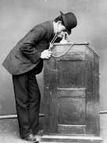
We even saw the invention of the camera George Eastman and Kodak and of movie making. Streets and cities had lights and we all had a great time listening to music. We had Discs like 33 and one third, 45's LP's
and music on reel to reel tape
and music cassette or on 8 track tape
and on transistor radio
The engineer and inventor John Logie Baird gave the world's first demonstration of a working television at 22 Frith Street in Soho in January 1926.
a viable television system was demonstrated using mechanical picture scanning with electronic amplification at the transmitter and at the receiver. It could be sent by radio or over ordinary telephone lines, leading to the historic trans-Atlantic transmissions of television from London to New York in February 1928.
https://www.bairdtelevision.com/mobileindex.html
The invention of television in the 1920s was a breakthrough in technology because it was the first time sound and pictures could be sent over the air. At first, television images were only displayed in black and white and it wasn’t until the 1970s that people could see colour on the screen.
https://informationq.com/who-invented-tv-television/
In 1990, LED (Liquid Crystal Display) TV appeared, leading to larger flatter screens Despite having a different acronym, LED TV is just a specific type of LCD TV, which uses a liquid crystal display (LCD) panel to control where light is displayed on your screen. These panels are typically composed of two sheets of polarizing material with a liquid crystal solution between them.
Modern Flat Screen LED 4 K Televisions
An OLED display uses a panel of pixel-sized organic compounds that respond to electricity. Since each tiny pixel (millions of which are present in modern displays) can be turned on or off individually, OLED displays are called “emissive” displays (meaning they require no backlight).

In the early 1940s, the first electric computer was created but it was very large and not like the computers we use today. Since then, inventors have transformed the way computers work so that they are faster, more mobile, more powerful and multifunctional.
About_Bits_and_Bytes There was only one small problem the computers could only send signals as 1 on or 0 off they called this a BIT 1 is on 0 is off, so signals raced along wireless using on and off and we had to work out how to convert these signals into something we could understand. This took some time but when vacuum tubes were replaced by transistors things moved to computing with smaller devices, and things really speeded up. In 1939, William Shockley at AT&T's Bell Labs revived the idea as a way to replace vacuum tubes. Under Shockley's direction, John Bardeen and Walter Brattain demonstrated in 1947 the first semiconductor amplifier: the point-contact transistor, with two metal points in contact with a sliver of germanium. In 1949: Assembly language was first used as a type of computer programming language that was able to simplify machine code language, which is necessary for telling a computer what to do. Since then we have had lots of computer languages. About_computers About_Networks So here we were late into the 1960 when the cold war was in progress between Russia (USSR) and America (USA) when the US army wanted to send messages not through the air or by wire or at least so they could read them correctly, they asked a group of university people to come up with a method of communicating that was secure. The first workable prototype of the Internet came in the late 1960s with the creation of ARPANET, or the Advanced Research Projects Agency Network. Originally funded by the U.S. Department of Defense, ARPANET used packet switching to allow multiple computers to communicate on a single network. Now we start getting to digital technologies that we are interested in, Networks, The Internet, and that annoying BIT using only on or off, which we are about to put into packets known as BYTES. We knew about bits ages ago Leibniz invented the system around 1679 and he published it in 1703. He already used symbols 0 and 1. But we now needed to convert these to something a computer could understand, we also needed a language for the internet, and along came HTTP (HyperText Transfer Protocol) is the underlying protocol of the World Wide Web. Developed by Tim Berners-Lee and his team between 1989-1991, HTTP has gone through many changes that have helped maintain its simplicity while shaping its flexibility. Now we needed computer talk and we came up with BINARY, The main reason the binary number system is used in computing is that it is simple. Computers don't understand language or numbers in the same way that we do. All they really have available to work with are switches and electrical signals, either on or off. Then in the 1930s George Boole, an English mathematician, logician and educator, came up with combining numbers using (Boolean logic), using and, or, and not. By combining number sequence say four 1’s or 1011 or four 0000, we can get an answer if we convert the sequence to a character like say “a” on a computer keyboar, which is binary number 01000001 two groups combined in eight bits. We found a number system that involves the use of a binary convertor, the first electronic, digital computer? Built at the University of Pennsylvania and called the Electronic Numerical Integrator and Calculator (ENAIC), the first electronic computer was invented seventy odd years ago. The binary number system that it utilized, however, pre-dated it by almost three centuries. (remember Gottfried Wilhelm Leibniz), A binary digit is defined as a bit. A bit can represent either 0 or 1. To represent other values, bits need to be combined. Eight bits comprise a byte, which is the smallest measure used in computer operating systems. By using Binary groups say 0000 or 1111 we can add characters to each set and use these in groups of eight numbers. Examples of binary codes include alphanumeric codes such as The American Standard Code for Information Interchange (ASCII) and Binary Coded Decimals (BCD), where each decimal digit is represented by a 4-bit binary number. About_Internet and networks Now if we made all computers understand that two numbers can be combined into four numbers and four numbers into sets of eight we can cover letters, numbers and keyboard characters that can appear on a screen. So here begins our digital technology journey called Bits and Bytes and expanding this to things like ASCII to set the characters associated with a set of numbers and using Unicode to sort out sets of Binary BYTES we can get computers to talk to each other and we are in a whole new ball game because people like Steve Jobs, Steve Wozniak and Bill Gates appeared offering domestic computers and PC’s Windows, and computers like Apple Computers, like Lap Tops, iPads, iPhones and lots of goodies for us to play with. The next part was sharing the information with everyone so we see networks appearing where computers are joined together in a package called The Internet and our friend Tim Berners-Lee and his team had given us the language:// hypertext transfer protocol or as we call it HTTP. But along with all this we saw the criminals and hackers arrive trying to steal our information and we need to understand how all these computers work, what are browsers, how binary works and how computers use networks to talk to each other, and how social media infulences us and how all this leads to Digital Technology. About_Viruses_Hacking
This is a compendium of helpful lists and information to help you through your studies, it includes facts and useful tips on using the best choice of words and includes trivia on various facets of life.
Explanation for Student Compendium
| Explanation for Student Compendium | |
|---|---|
| File | Includes |
A shortened form of a word or phrase.
ANU - Australian National University
|
|
An acronym is a pronounceable word formed from the first letter (or first few letters) of each word in a phrase or title. Sometimes, the newly combined letters create a new word that becomes a part of everyday language. An example of this is the acronym radar. Also includes Mnemonics Educational Acronyms, Information Technolgy Acronyms, |
|
a
word naming an attribute of a noun, such as sweet, red,
or technical. Adjectives are words that describe or modify other words * Priest = Sacerdotal |
|
| Types
of animals, Sounds the make, Where do they live, Collective names of animals
Apes - gibber, Camel live in Australia, Sahara & Arabia, names = Bull - is called a heifer |
|
| a
word opposite in meaning to another (e.g. bad - good ).
Opposites = Absent - present |
|
Big_Words for small |
Small
word with big word alternative
Anger - Dudgeon * bold - Audacious
|
| Business_Terms_Glossary | Terms used in business |
| A feature or quality belonging typically to a person, place, or thing and
serving to identify them
A partner in crime - accomplice |
|
| Words
pertaining to the church
A passage between the pews in a church - Aisle |
|
Similar
sounding words with different meanings
Council, an administrative or advisory body, do not confuse with counsel, advice or guidance. |
|
All about communication see also A History of Communication |
|
All computer terms (ASCII, Binary, Unicode) |
|
| Names
given to certain towns or countries includes facts about climate
Aberdeen - The Granite City The Torrid Zone has the hottest climate Zinc - Mexico, U.S.A., Spain |
|
Words
pertaining to death
Occurring after death - posthumous |
|
A diminutive person
is short and small. A diminutive wordis a "cute" version of
a word or name: for example, "duckling" is
a diminutive of "duck" and Billy is
a diminutive form of the name William
Cask - casket |
|
Famous
world discoveries of countries continents, includes Australian discoverers
Matthew Flinders -discovered Bass Strait. * Lord Robert Baden-Powell founded the Boy Scouts in 1908 |
|
Explanation
of a word, words in literal expressions denote what they mean
according to common or dictionary usage
Aloof -To keep to oneself and not mix with others. |
|
| Flags of the world | Flags of countries in the world includes a countries quiz |
Gender
list of male female
Actor - Actress |
|
Countries
of the world and Geographical facts
The Circumference of the earth is approxinmately 24,800 miles. |
|
List
of gods and goddesses
War - Mars |
|
Australian
and UK government with words denoting government
Australian Government |
|
Explains
grammar syntax and verbs adjectives nouns etc.
Explains various uses of nouns verbs etc. |
|
The
art of living together includes senses, elements, cardinal numbers, cardinal
virtues
THE ART OF LIVING - Consideration for the feelings of others |
|
Alphabetical
list of the most important inventions
Clock (pendulum) - Christian Huygens |
|
List
of kings and queens of Britain with facts and information
EGBERT 827 - 839 |
|
Practical
list of words explained in a
sentence or phrase
A book in which the events of each day are recorded - Diary |
|
Words
pertaining to marriage included anniversary gifts
A hater of marriage - misogamist |
|
Medical
terms in use today
A disease confined to a particular district or place - endemic |
|
Metaphor is a figure of speech that makes an implicit, implied, or hidden comparison between two things that are unrelated |
|
Sounds
that things make, description of various venues or habitats, special calendar
dates, Aussie slang words,
All Fools' Day - 1st April - Aussie slang - sounds that things make etc. |
|
Names
of persons or things, occupations, and a description of word meanings i.e.
Terrestrial = Earth
Various names explained Bird of night
|
|
Words
connected to nature
A four-footed animal - quadruped |
|
a
word or statement that expresses denial, disagreement, or refusal
That which cannot be pierced or penetrated - impenetrable |
|
Explanation
of nouns, COMMON Nouns, PROPER Nouns, COLLECTIVE Nouns and ABSTRACT
Nouns.
sit - seat (when to use Nouns) |
|
Numbers
of animals things i.e. A number of Cattle = herd
A number of fish taken in a net - catch, haul |
|
a person
or thing that is totally different from or the reverse of someone or
something else.
Unable to read - il-literate |
|
Special
days, Aussies slang and any other items not covered in this list
Any other items that might be of interest |
|
List
of Patron Saints
St. George of England, St. Andrew of Scotland |
|
Noctiphobia - Fear of the night |
|
A list of places A
place where bees are kept = apiary
A place where fishes are kept - aquarium |
|
The case which
is used to show possession is called the possessive case or genitive
case. In case of nouns, an apostrophe is used to show it.
Is the case which denotes the owner or possessor |
|
All Prefixes |
|
List
of various professions
The commander of a fleet - Admiral |
|
Famous proverbs A
bird in the hand is worth two in the bush
A bad beginning makes a good ending. |
|
Serious Quotes and some Witty funny one liners Someone has glued my pack of cards together...I cannot deal with it! |
|
Famous sayings as a drowned rat. - as ancient as the sun—as the stars. |
|
List
of words used in Science or Art
An instrument for detecting earthquakes - seismograph |
|
Explanation
of scientific items like barometer
The science of land management - agronomics |
|
The
seven wonders of the ancient world with explanations
The Pyramids of Egypt |
|
Words
to use as a Simile which is a phrase that describes one thing in terms
of another. A simile usually begins with like or as.
Archates - a good friend * Belt = to hit below the belt |
|
List
of words or phrases that has the same or nearly the same meaning as
another
abandon....... desert, forsake, leave. |
|
Understanding
words, Incorrect Use of Words, |
|
The floor was dirt. Only the wealthy had something other
than dirt, hence the saying "dirt poor." |
|
Words
used in war
Nations carrying on warfare - belligerents |
|
Anniversary dates and wedding information |
|
Words
shown in noun or verb
strong - strengthen |
|
Signs of the Zodiac |
|
Best of luck Peter J Faulks


Abbreviations![]() Acronyms
Acronyms![]() Animals
Animals![]() Antonymns
Antonymns![]() Big Words for Small Words
Big Words for Small Words![]() Characteristics
Characteristics![]() Church
Church ![]() Confusing Words
Confusing Words
![]() Countries Cities
Countries Cities ![]() Diminutives
Diminutives![]() Famous
Famous![]() Figurative Expressions
Figurative Expressions![]() Gender
Gender![]() Geographical
Geographical![]() Gods and Goddesses
Gods and Goddesses![]() Government
Government![]() Grammar and Syntax
Grammar and Syntax![]() Human Relationships
Human Relationships![]() Inventions
Inventions![]() Kings and Queens
Kings and Queens![]() Literary Sentences
Literary Sentences![]() Marriage
Marriage ![]() Medical
Medical![]() Metaphors
Metaphors![]() Miscellaneous
Miscellaneous![]() Nouns
Nouns![]() Names
Names![]() Nature
Nature![]() Negatives
Negatives![]() Numbers
Numbers![]() Opposites
Opposites![]() Patron Saints
Patron Saints![]() Places
Places![]() Possessive Case
Possessive Case![]() Phobias
Phobias![]() Professions
Professions![]() Proverbs
Proverbs![]() Science & Arts
Science & Arts![]() Scientific Terms
Scientific Terms![]() Seven Wonders
Seven Wonders![]() Similies
Similies![]() Synonyms
Synonyms![]() War Words
War Words![]() Wedding
Wedding![]()
![]() Words to Verbs
Words to Verbs![]() Other
Other![]() Home
Home

Email Peter Faulks

Page last updated 23rd January 2020














